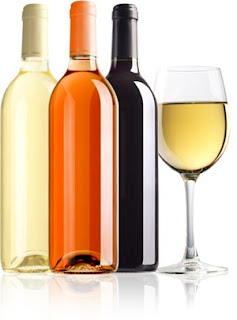
(Wine Part 1) Wine is a naturally occurring product that has been around for more than 6,000 years, ever since people learned how to ferment grapes. Since I have moved to California, I have been to both Napa and Sonoma numerous times and gone on different wine tours and participated in many different tastings. I have had many discussions related to how wine is made and the different types of wine that exist. Now although wine is not my favorite drink (milk is), I would have to say it is my favorite alcoholic drink now that I am older. The parties I now attend I try to stay away from the shots and hard alcohol and stick to wine or beer (unless I am at Laurens parent’s house where a shot of patron is a tradition).
I did a little research by asking some vineyard owners/tour guides questions, and found my facts from Quamut. The first thing that I have learned is how wine is made. The total process of making wine is very easy but the “details are difficult” when it comes to turning grapes into the perfect wine.
The steps include:
-Grow grapes
-Pick the grapes
-Crush the grapes
-Collect grapes in fermentation cask (yeast transforms the sugar in the juice into alcohol – called fermentation)
-Wine matures in casks
-Age wine in bottles

Sonoma, California
That all sounds so easy right? Well, I am not going to say I know everything about wine, and if I was talking to my parents or my friend Emily I would look like I know next to nothing. That being said, I was interested in what makes a “good wine”. I have always been told a higher price doesn’t automatically mean it’s a better wine. So how is a good wine made?
“The Grape” – The type of grapes used to make wine determine the character of the wine. There are different types of grapes that make different types of wine, i.e. white wine vs. red wine. The same type of grape can have different characteristics, “Pinot Noir grapes taste different from wine made from cabernet Savignon grapes”.
“Environment” – Sunshine, humidity, rainfall, soil and temperature all affect wines taste and character. There are many vineyards that use the same grape but because they are in a different location the taste can be totally different. Then you can also have the same grape on the same land, but a different year can yield a very different taste.
“Cask Material” – There are two different types of casks which serve for different purposes. There are stainless steal casks which are nonreactive and used to let wine keep a fruity flavor. Then you have the oak casks which lessen the fruit and pass on an oaky or nutty flavor. This also gives the wine a smooth texture.
“Aging Time” - Aging is very important for different wines; the amount of aging depends on the type of wine. A wine will improve with age until it reaches a peak and then it will decline in taste.
Then you have different types of wines:
Red Wine Traits:
Flavors: strong and rich
Color: dark purple to full red to russet brown
How to make: crush black (purple) grapes and leave the juice with the skin on for a few days to a few weeks. The skin gives the wine its color and structure.
White Wine Traits:
Flavors: delicate in flavor and served chilled
Color: pale yellow to deep gold to pale green
How to make: crush “white grapes” (pale yellow)
Rose Wine (Blush):
Flavors: refreshing chilled to about 60 degrees
Color: light red to pink blush
How to make: Blush’s are made from red wine grapes but only left with the skin for a couple hours.
Sparkling Wines:
Flavors: fresh and bubbly
Color: pale yellow to deep gold
How to make: They do the first stage of fermentation and then they put it through a second stage of fermentation adding sugar and yeast to create carbon dioxide bubbles. Sparkling wines are usually made from white grapes.
Natural Progression of Wine Drinking:
I have had friends who don’t drink wine ask me, which is better white or red? When I first started drinking wine I started with white and now I prefer red wine. Doing more research I found out that there is a natural progression to wine drinking with the more wine you drink and the more you deepen your taste buds. Typically one starts out with a sweet white, then moves on to a dry white, then gets into sweet red and eventually progresses to a dry red. They say that once you develop a taste for the tannins in red wine, whites are not as pleasing as they were before. I believe that you should just drink what you enjoy, because to each it's own.

Sonoma, California
So there you have it, I will keep expanding on your wine knowledge next time.
*all this information can be found at Quamut.com
Fun Wine Facts:
-Ninety-two percent of California wineries produce fewer than 100,000 cases per year. Sixty percent produce fewer than 25,000 cases.
-Egg whites, bull’s blood, and gelatin have all been used as fining agents to remove suspended particles from wine before bottling. Egg whites are still commonly used.
-The Napa Valley crop described in 1889 newspapers as the finest of its kind grown in the U.S. was hops.
kenken its not that difficult to make wine. i made wine in 7th grade and had it in 8th grade
ReplyDeletethe comment b4 was not so anonymous i am not being an arrogant prick ill see u at X-mas at g&g's
ReplyDelete